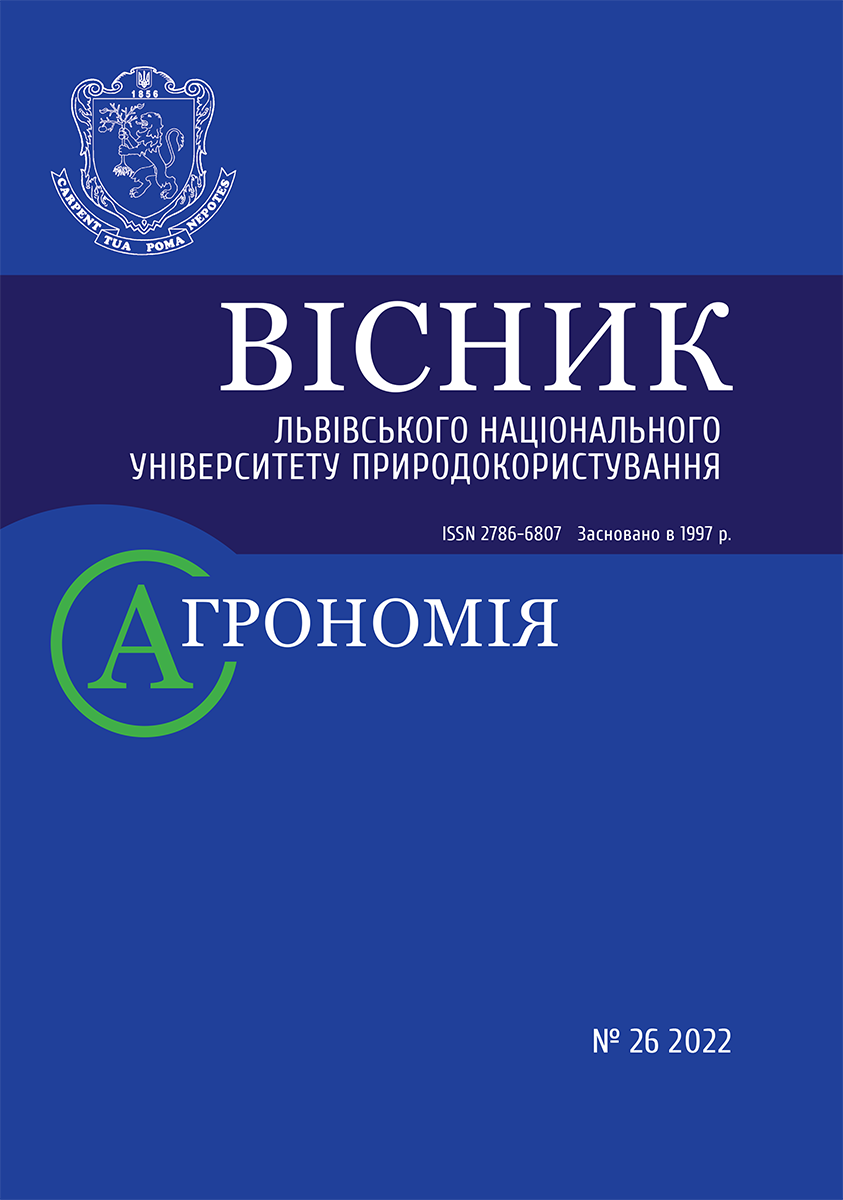ECOLOGICAL MONITORING OF ANTHROPOGENIC-DISTURBED LANDS OF THE LVIV LANDFILL OF SOLID DOMESTIC WASTE
DOI:
https://doi.org/10.31734/agronomy2022.26.0Keywords:
ecological monitoring, anthropogenic-disturbed lands, soil, landfill of wastes, heavy metals pollutionAbstract
Monitoring ecological studies of the conditions of soil and vegetation cover of anthropogenic-disturbed lands of the area of Lviv municipal landfill of solid domestic waste and the surrounding area were conducted.
The morphological analysis of soils showed that on territory, adjoining to the dump, turf soils are preventing. At the depth of 30–40 cm, they are flooded by the ground waters and thus, become clay ones.
It is determined that in the analyzed samples, the concentration of heavy meatls exceeded the average values and sanitary standards. The greatest excess over the average values was marked in cadmium and arsenic, namely four times, lead – two times, molybdenum, cobalt and silver – 23.7; 12.3; and 49 times respectively.
The greatest concentrations of heavy metals are mostly found in the peripheral areas of trash dump. Near the dump, the anomalous concentrations of almost all determined elements are marked. With a removal from the object of contamination heavy metals diminishes, but their concentrations remain higher than the norms. At the depth by genetic horizons, concentration of those elements is approaching the standard.
Considerable heterogeneity was registered in distribution of concentrations of the elements on the tested areas The.anomalous content of most elements shows up in soils of area actually valleys of to 350 meters from trash dump, though further their high enough concentrations are also kept. The abnormal concentrations of metals are characteristic also in the north-eastern part of valley which adjoins to the stream of flows from a ground. Obviously this stream to some extend performs infiltration of pollutants in soils. Contamination of soils with heavy metals, practically all elements, are marked within the limits of sanitary-hygienic area of the landfill, namely, in the places of location of oil lakes and, especially, in the places of output of liquid phase of oil on an earth surface.
Thus, it is concluded that the Lviv landfill of solid domestic waste and artificially created depositories of oil, organized and built with violation of the basic requirements of environmental protection, namely, the geochemical barrier to protect geological and geohydrological environment from penetration of pollutants is not created.
References
Hlukhovskyi I., Ovrutskyi V., Shumeiko V. Modern methods of neutralization, utilization and burying the toxic waste of industry. Кyiv, 1996. 100 p.
Khilchevskyi V. Wastes of production and consumption and their impact on soils and natural waters. Кyiv. Published by Kyiv Univesity, 2007. 152 p.
Shykula M., Hnatenko O., Petrenko L., Kapshtyk M. Soil protection. Кyiv: Znannia, 2004. 398 p.
Smetanin V. Environmental protection from production and consumption wastes. Мoscow: Kolos, 2000. 232 p.
Snitynskyi V., Babiak N. Contamination of sturf-podzolic soils of the territory adjoining the laid-up Lutsk dump of solid domestic wastes. Bulletin of LSAU: Agronomy. 2003. No 7. P. 3–5.


